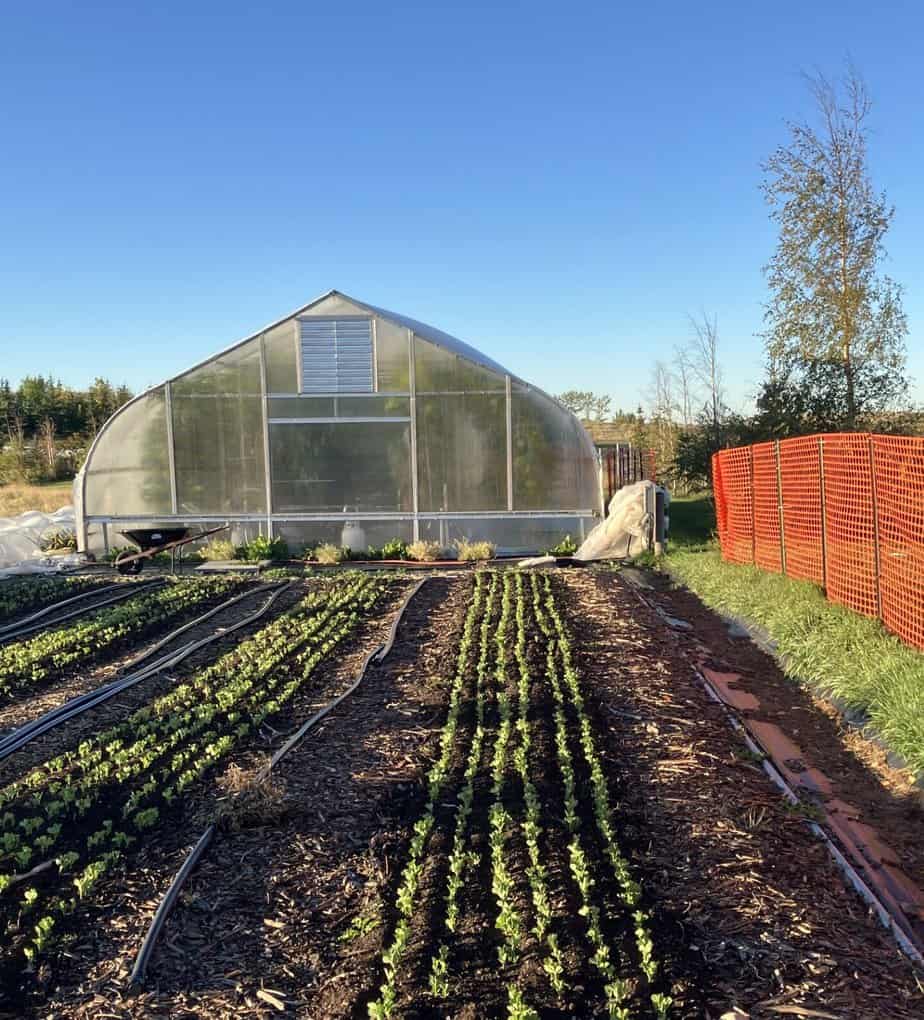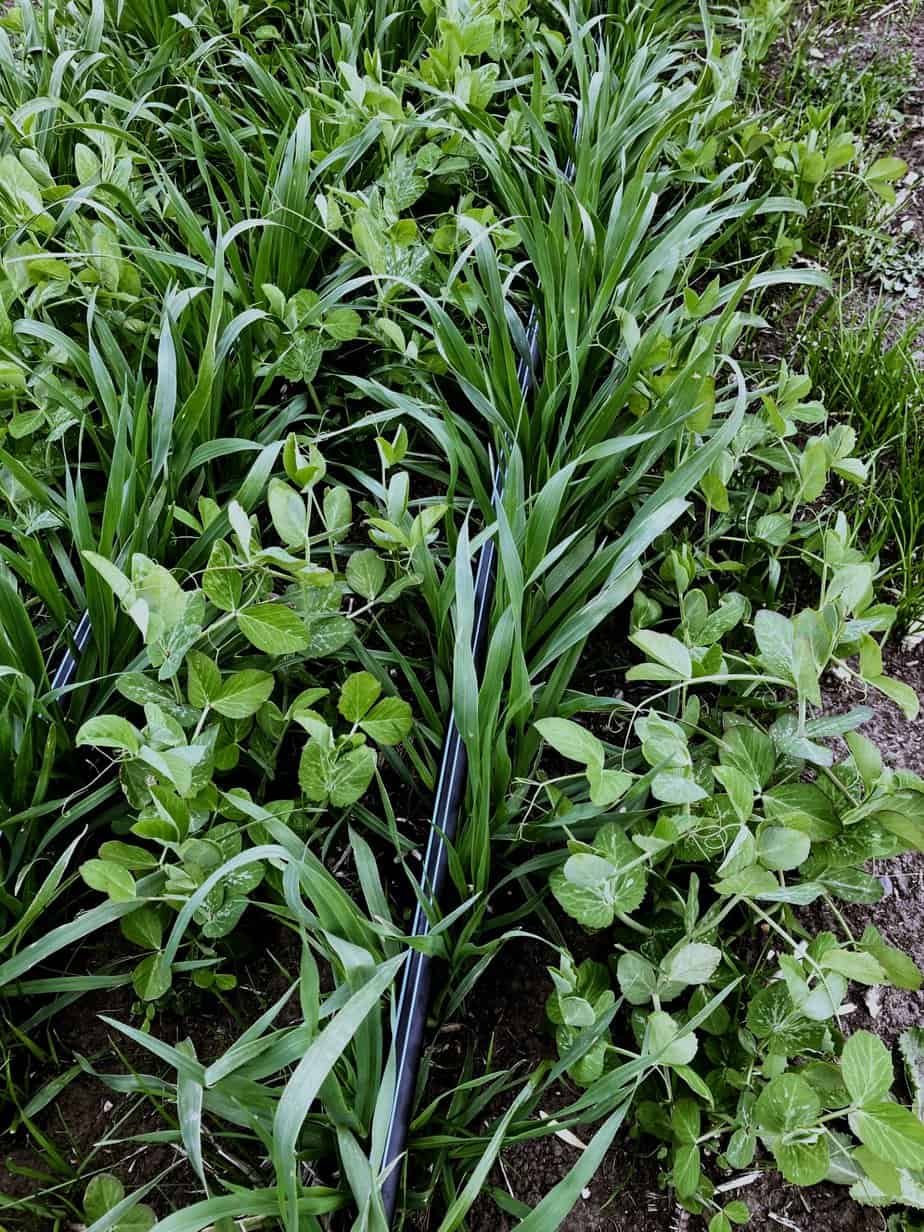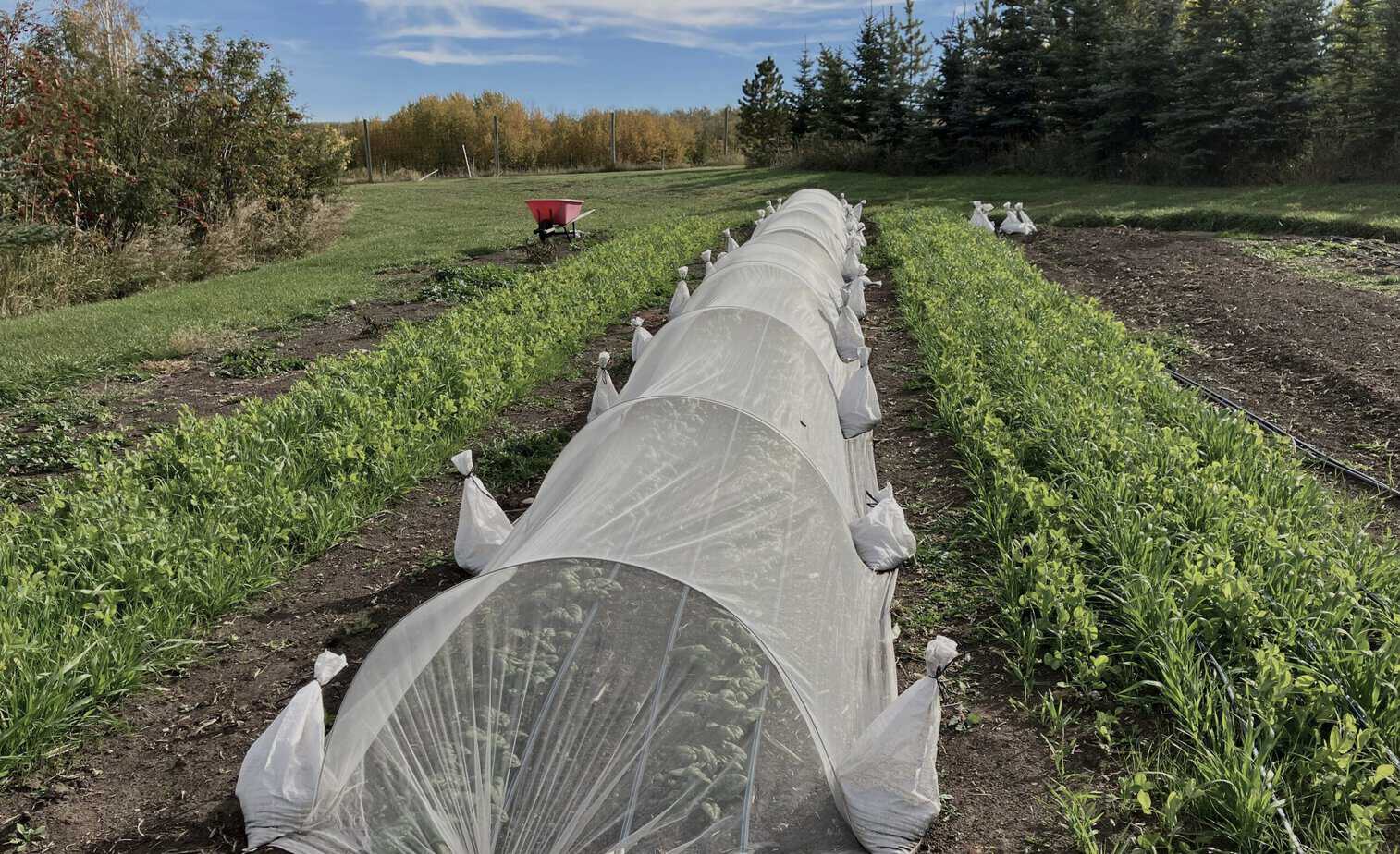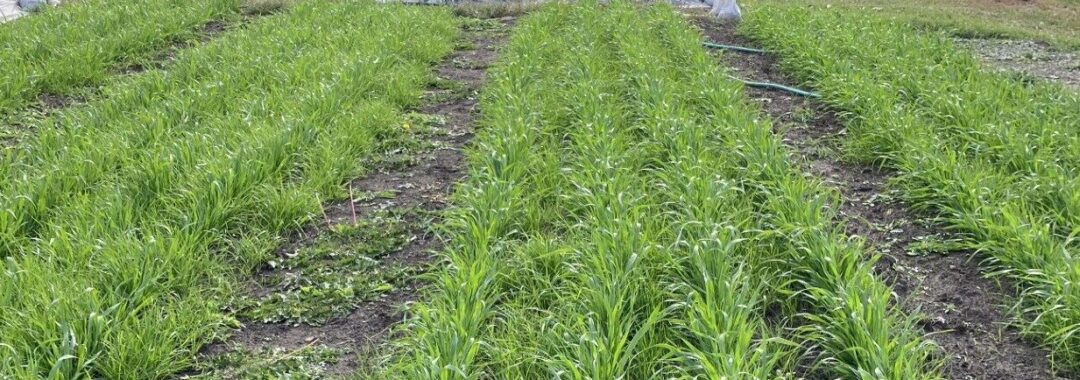Cover Crops and Soil Biology
Cover Crops – what are they? Cover crops are planted, not to be harvested, but to provide benefits in numerous other ways. Cover crops add to the fertility and quality of the soil. They add things like organic matter (carbon) and nitrogen and improve tilth – that soft, rich, earthy feel. They also cover the ground to prevent erosion and keep weeds from getting established. And most importantly, they feed the soil biology. We plant cover crops in the beds, where the vegetable crops are grown, not in the entire garden space.
We’ve always known that there is life in the soil, and that good soil contributed to healthy plants. But recently it has come to light that there is a great deal more life going on down there than we can possibly imagine. It turns out one teaspoon of healthy soil hosts literally millions of microbes, mostly in the form of bacteria and fungi. And tens of thousands of different species may be present, comprised of bacteria, fungi, protozoa, nematodes and others, most of which are invisible to us. But what we can see, sitting on top of this intricate soil food web, is the lowly earthworm, the ultimate barometer of soil health! We love it when we see lots of earthworms in our soil.
All these microbes work in symbiotic relationships with the plants. The plants send root exudates in the form of carbohydrates (mostly sugars) down to their root hairs. The microbes are waiting there with nutrients and minerals they have eaten in the soil, and they do an exchange. The microbes get the sugars, the plants get the nutrients. It’s a continuous process, a thriving underground marketplace: plants feeding microbes and microbes feeding plants. Thus, the secret to healthy plants is healthy soil – soil with lots of life in it! And the key to healthy soil is living plants!
Flavour and Nutrition
And guess what? Plants grown in this way – with a thriving soil microbiome – contain greater quantities vitamins and minerals. What’s more, they also contain a bunch of micronutrients like antioxidants, lycopenes, anthocyanins, polyphenols, flavoniods and many others. Our bodies recognize all these additional micronutrients as a good thing; indeed we interpret them as flavour! Superior flavour, then, is an indicator of high nutrition! The two go hand in hand – and it all starts with Living Soil!
*More on this in Chemistry vs Biology, below

Newly Planted Cover Crop
The Kohlrabi, Carrots and Lettuces have been harvested and by mid August it’s too late to plant another crop. These field peas are planted as a Cover Crop to feed the soil microbes and add nitrogen.

A Bed Planted to Cover Crop. Drip tape irrigation is kept in place.
By mid September the cover crop mix in this bed is getting fairly big, and we know that below ground there is more plant material than above ground.
In spring the remains of the roots will be available for microbes to eat. The plants themselves will be dead and we will either plant through the surface residue, or shallow till them and then plant. Either way, the surface plant residue will also be broken down and consumed by microbes in the soil.

Close up of three species: Oats, Peas and Annual Rye Grass.
Oats are strongly associated with mycorrhizal fungi and support phosphorus-solubizing bacteria which can rebuild soil with a high phosphorus content – which ours does. Peas add nitrogen while Rye grass has roots that penetrate deep to keep the soil soft and aerated. All feed the soil life and promote the development of aggregates and tilth.
Soil Chemistry
Plants need nutrients like Nitrogen, Phosphorus and Potassium in large quantities, as well as iron, calcium, magnesium, copper and many other mineral. As recently as a couple of decades ago, the general thinking was that plants depleted the soil of these nutrients, and it was incumbent on the farmer to replace them. This was generally done through additives, typically in the form of chemical fertilizers. The focus was on getting the soil chemistry right.
But there’s been a big shift in our understanding. There is now an awareness that soil biology is hugely important. In fact soil biology is more important than soil chemistry!
Cover Crops / Soil Biology
That’s where cover crops come in. Toward the end of the season, when a bed has been harvested and there is no longer time for another crop to grow – say around the middle of August – we will often plant a cover crop in that bed. Cover Crops, like the plants before them, continue to feed the soil microbes.
Microbes mine nutrients in the soil and bring them to the plant roots where an exchange takes place; the microbes get sugars and the plant gets nutrients. Fortuitously, the microbes bring nutrients from much further out than the roots extend, thereby increasing the effective supply area for the plant. As well, the plant signals the microbes, letting them know what its needs are, and the microbes respond by bringing the requested items – different species providing specific items. In this way the plant can overcome shortages and imbalances to become healthier and more disease resistant than it otherwise would be.
On the other hand, when chemical nutrients are provided, the plant uses them directly and forgoes the development of microbial relationships. Since it is difficult for the farmer to calculate exactly what the plant needs, the plant inevitably becomes short of one or more nutrients. And as the helpers in the soil are not there the plant has nowhere to turn, and its health is compromised. Its also possible that a nutrient imbalances exist, like too much phosphorous, in which case the plant also suffers. Issues like this are largely mitigated when microbes are an integral part of the picture. This is why we place a high emphasis on supporting a vibrant soil life, and Cover Crops are a big part of that.
* Also see Cover Crops and Soil Biology above.
Two Rows of Fall Cover Crops with a late crop of spinach in between.

